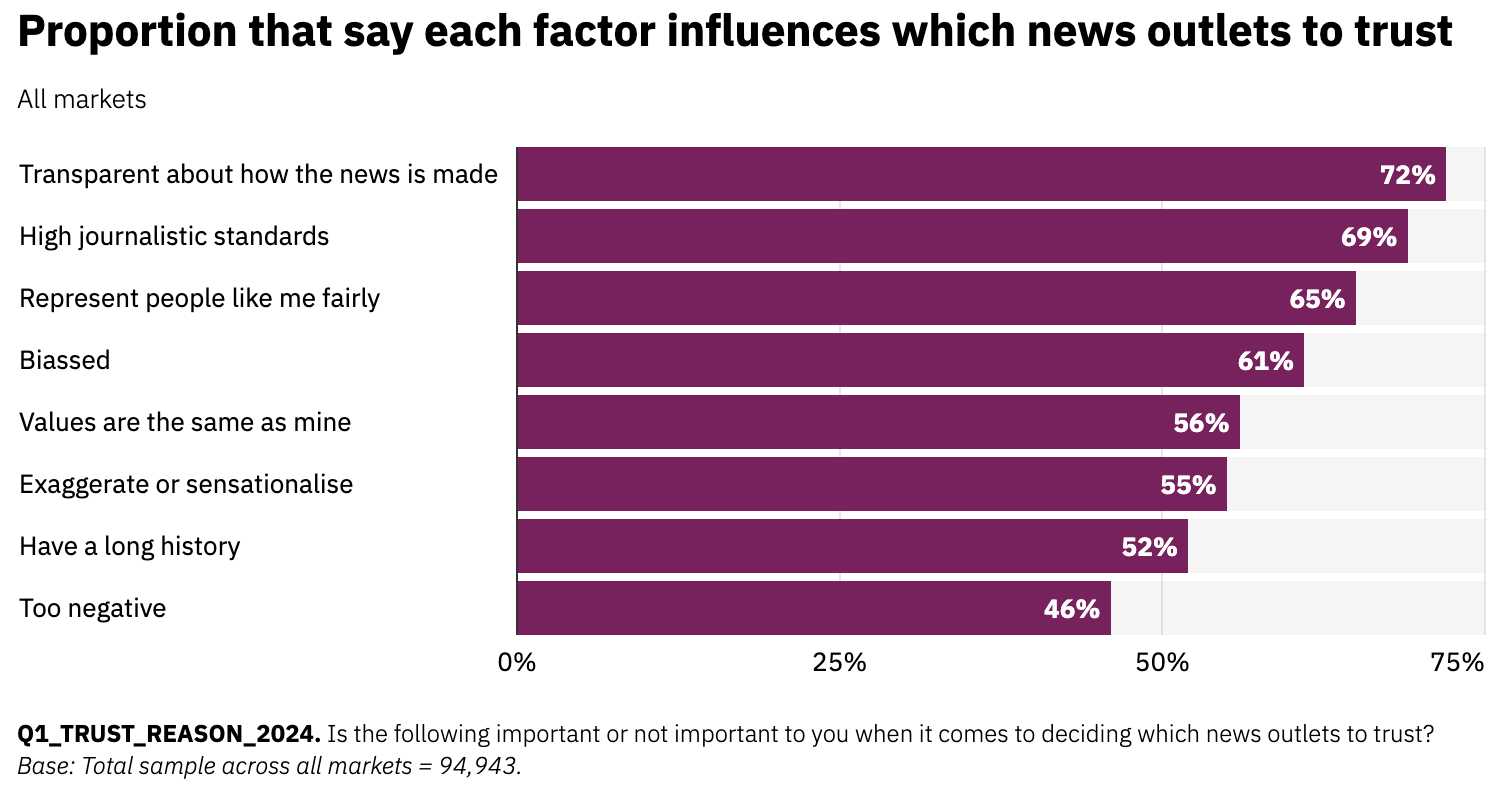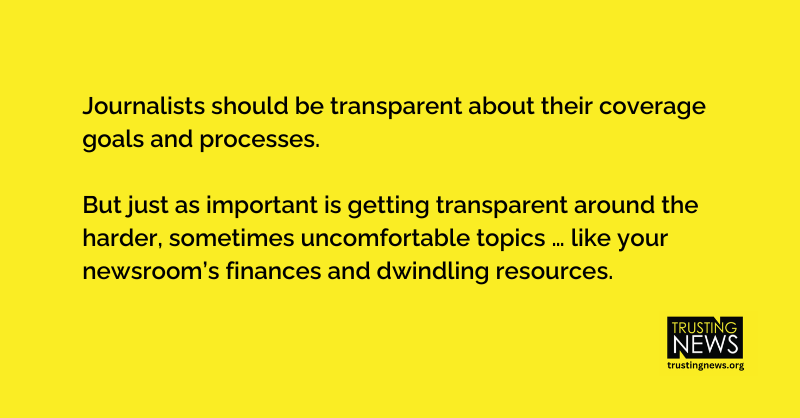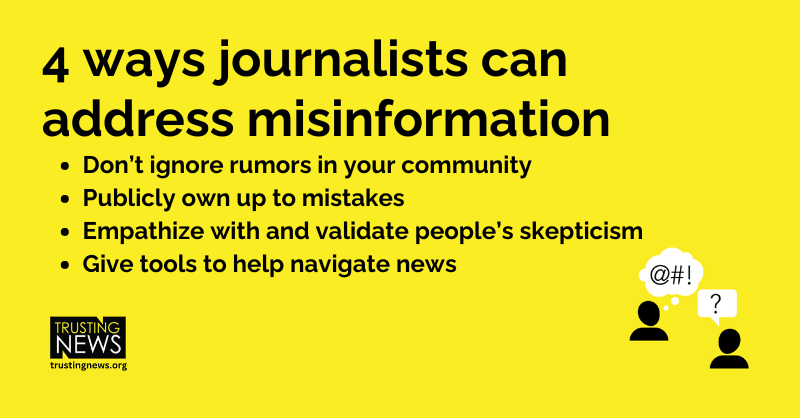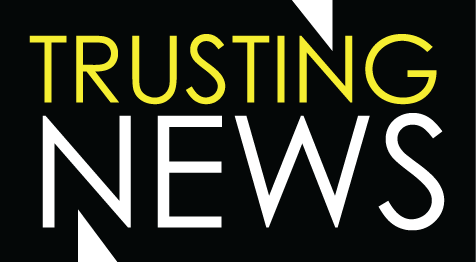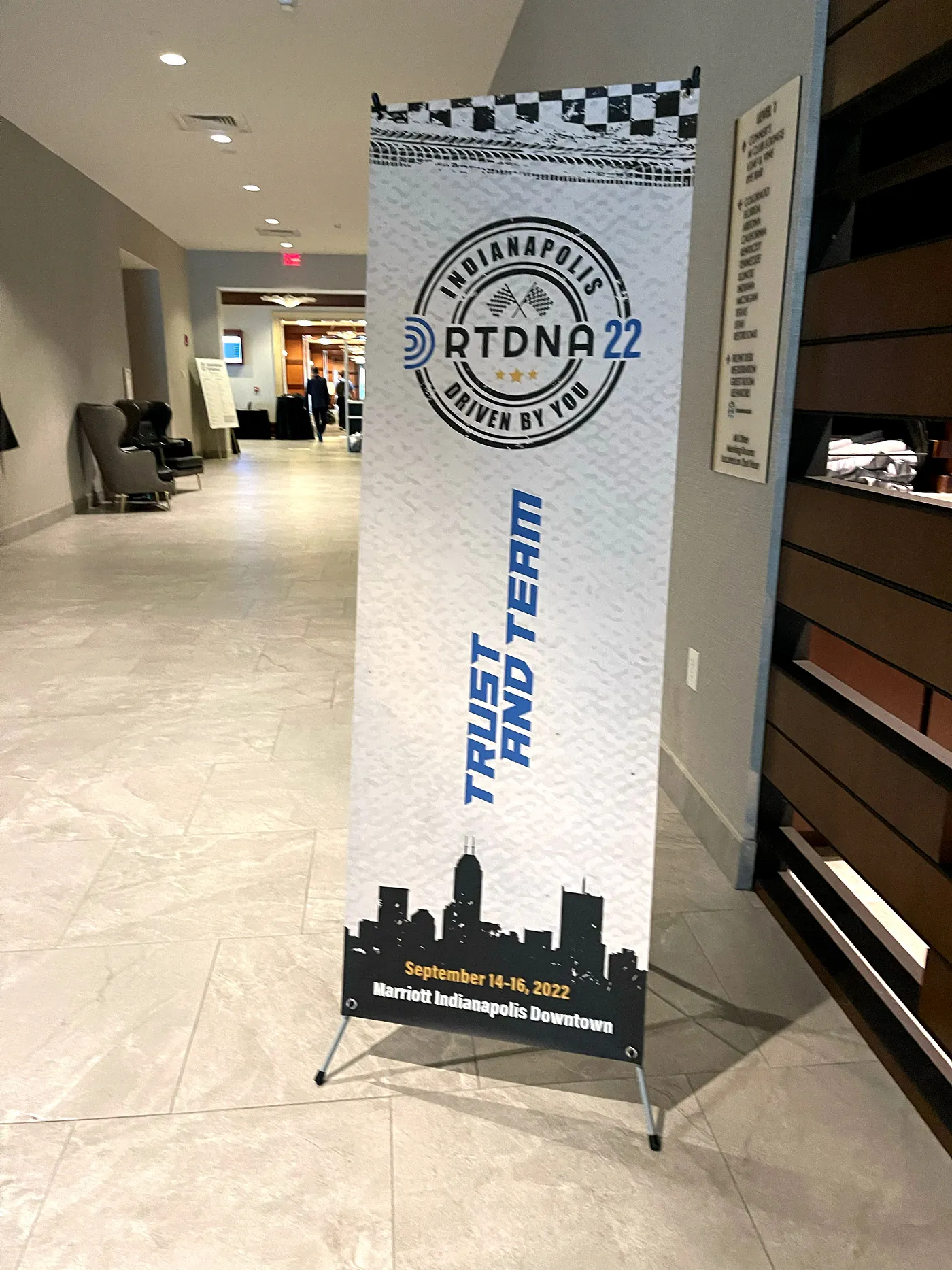
When it comes to trust, local news organizations have been the bright spot for the journalism community as years of research and polling continue to show people trust in local news content more than national. For many people working in local news, that trend brings comfort, hope and sometimes makes the issue of building trust seem not […]
Build trust by being real, right, objective and part of your community
When it comes to trust, local news organizations have been the bright spot for the journalism community as years of research and polling continue to show people trust in local news content more than national.
For many people working in local news, that trend brings comfort, hope and sometimes makes the issue of building trust seem not that urgent.
Yet, while trust may be higher in local news, a recent research project the Radio Television Digital News Association (RTDNA) conducted with Magid shows local news is not exempt from the factors that lead to distrust.
According to the research, “if just one journalist from a local news source is not trusted, audiences are overwhelmingly less likely to use the source overall.”
RTDNA released this research at its national conference in Indianapolis last month. During the release, RTDNA and Magid leaders led a discussion on solutions and divided their recommendations into four categories:
- Be Right: News consumers trust journalists when they explain how stories developed and changed over time.
- Be Your Community. News consumers trust journalists who are knowledgeable about the local community and what issues are important to them.
- Be Real: News consumers trust journalists when they are authentic, genuine and own up to a mistake.
- Be Objective: News consumers trust journalists who leave personal opinions out of news coverage.
These solutions echo what Trusting News is learning and testing. Continue reading to see how our research and work with newsrooms relate to these four categories. Most importantly see how using these can be used to build trust with an audience on-air, online, on OTT and on social.
Our first recommendation: share this information and other research related to trust with your newsroom. Journalists can’t solve a problem they don’t know or understand. Once you share it, invite feedback and conversation around the issue. (Our research deck on trust can help get you started.)
At Trusting News we have a lot of research, suggestions and ideas we want to test. What’s highlighted below is what seems most relevant to the four categories of recommendations from RTDNA. If you have other ideas or have tried any of what’s listed below (or want to!) email me: Lynn@TrustingNews.org.
Be right
- Explain why you use certain sources. A great way to show your audience you think carefully about the information you share is to explain your use of sources. Explain why you choose to talk to an individual, what their credentials are and what you were hoping to learn from them. Consider using graphics on-air to show an individual’s expertise. Also, consider talking about the sources who didn’t make it in your story, but you spoke to for perspective and context, and don’t forget about explaining the use of anonymous sources. Another idea, in this example, a reporter for the Christian Science Monitor shared how she was able to get in touch with students she quoted in her article. You can also explain how you tried to reach a source.
- Tell your audience what you don’t know. By being upfront about things that aren’t yet known, journalists can remove some speculation and assure their audiences they’re continuing to ask the important questions. This is especially important when covering big, controversial stories — like elections, public health crises and protests. Consider using graphics and interactive screens to break this content out on-air. More tips on how to do this are here.
- Explain the reporting process. We know this works. We call them “explain your process boxes,” (other newsrooms call them background cards, nerd boxes, etc.) and we have research showing this works in print and on-air. You can explain how you get documents, the cost of documents, why you did a story, etc. Here is a handout to show you what these transparency elements could look like.
- Use clear labeling. Not being able to tell opinion content from news content is a frustration a lot of news consumers have. And, in some cases, that’s for good reason. Across platforms, news organizations don’t always make it easy. We have to make sure we are labeling our content and using words the public will understand. We have an audit that can help with this.
- Be careful with breaking news labels. Breaking news is a term that elicits varied feelings for journalists. It seems to always be a hectic time, with people and information moving at lightning speeds. It’s also when news organizations have an opportunity to fulfill one of their top duties: providing accurate information to the public. While a lot of us thrive and feel an adrenaline rush during breaking news situations, it’s also a time when most mistakes happen. And our audiences notice. Explain how breaking news works and be careful with how often you use the breaking news label.
- Publish style and ethics guidelines. We know there are standards, principles and rules that serve as the ethical foundation for what we do. But most people aren’t aware of them, much less able to describe them. We must stop assuming people will give us credit for being thoughtful and careful in our reporting. We have to explain our decisions to them in ways that are relevant to the content they’re consuming. Some ideas on what to explain can be found here and some examples of what publishing can look like are here.
- Use a checklist to help hold yourselves accountable. If we only do this important work a few times it’s less likely to make a difference. Consider creating a checklist for reporters and editors, reminding them of ethics policies and other style guides. This can help your content more consistently meet your standards. Here is an example from NPR.
- Make information accessible. It’s important to explain processes when people are consuming the content. Find ways to insert these explanations into daily news. One idea we would love to test: would QR codes on-air be a good way to get people to consume these explanations while they watch a newscast?
Be your community:
- Tell your community you are there for them. One of the first elements of building trust we explain to newsrooms is people are not giving you automatic credit for being careful or thoughtful. They also are not automatically giving you credit for some core journalistic beliefs like being a public service. If you want them to know you care about the community and helping them, you have to tell them. Check out how WCPO does this on its about page and review this Medium post for step-by-step guidance on how to create an effective “About Us” page. Be sure to connect with your creative services team too, to make sure the messaging attached to news stories reflects what is seen in promos.
- Hiring needs to reflect the community. We have to do a better job of having the people in our newsrooms reflect our community. This is true on all levels: race, sexuality, ethnicity and other aspects of life like religion, military experience, socioeconomic status, education levels, etc. We worked with newsrooms to create a hiring guide we think can help with this. Something else to think about: we may have to be flexible about the qualification requirements we have. If someone is a trusted source in the community or from the community but doesn’t have a college degree, are we willing to train them on journalistic principles and still hire them?
- Go into your community. If we want to understand the community we have to know who they are. What if journalists spend a day a month in a specific area of your community with the purpose of talking to people? Not for a story, but to hear from them and visit with them. It’s important when we do this that we reach real people. Not people we use as sources (local activists, church leaders, etc.) but people we normally do not talk to or engage with.
- Attend and host community events. It’s also important to be where people already are. Have a presence at community events and encourage journalists to get involved with the community. For this to build trust it will probably involve more than being a host at a gala. Also, work to host your own events and invite the community. You could explain your reporting process here, work to gather feedback from them on how you’re doing, etc. Try to involve the entire newsroom too, not just talent.
- Talk to your community. If you can’t commit to going into the community, what about committing to talking to community members once a week or once a month? We have a community interview guide and recently worked with journalists on doing just that.
- Report on issues they care about. If you talk to your community and get to know them you’ll be able to better cover issues and produce stories they care about. Once you know what these topics are, focus on making the content useful and helpful for them. Two topic ideas to start with: focusing on solutions and committing to following up on stories.
- Make a pronunciation book and publish it. This idea was proposed during the RTDNA session and I think it’s a great one. It may seem small, but if journalists are mispronouncing local street names, cities or food, it can make people think they don’t know or care about the community. Once you make a guide for employees, consider publishing it. This will let people know you care about getting things right. When publishing you could also ask for suggestions on what should be added or changed. (If you do this, let me know!)
Be real
- Talk about your mistakes and make it easier for people to tell you about them. We don’t like to get things wrong and we work hard to prevent mistakes from happening. But, sometimes they still do. Be honest about mistakes and what you’re doing to prevent them. Also, get on the record about how hard you work to get things right. Read more about why this is important in this Medium post (it also includes examples of how newsrooms are making their corrections policies public and tools to make it easier for people to submit corrections to you.)
- Make it easy to contact your reporters. Update staff bios and make sure they are easy to find. Consider including contact information on stories and consider reporter mission statements.
- Look for opportunities to introduce your journalists. Use social media and other content like newsletters to show your audience who’s behind your journalism. Check out how the Philidelphia Enquirer did this and how The Day did this on social media and through videos from staff.
- Have humility and show compassion. If we want people to trust us we have to be willing to meet them where they are sometimes. When it comes to news, that means showing compassion for the news consumption experience. It’s confusing and frustrating at times. Keep that in mind when responding to the community, especially when addressing their complaints, questions and criticisms. KING 5 anchors showed humanity, humility and compassion in this on-air exchange. Review this for tips on responding in person to common criticisms from community members. You can also build trust by helping them navigate the news.
- Talk about your connection to the community. If you are from the area, share that. When talking about the stories you cover, if it’s something you are seeing in your neighborhood or at your kid’s schools consider sharing that too. Journalists are sometimes seen as being from the outside, if you aren’t try to share that when it’s appropriate.
Be objective
- Word choice is important. A single word can make a sentence or headline take on a whole new meaning. Words also have connotations that can easily suggest bias or opinion. Read more about why paying attention to word choice can help you reach more of your community. Review this for some words to think carefully about before using.
- Avoid generalizations. As journalists, we probably don’t mean to contribute to the polarizing world we live in but we are. One way this happens is by overgeneralizing and trying to fit everyone into specific categories. Read more about how to prevent this so we can stop contributing to polarization.
- Change the culture of editorial meetings. What if everyone in the newsroom felt comfortable talking openly about their apprehension of the direction a story was going in or the selection of a story to cover in the first place? Or felt comfortable enough to say they shouldn’t cover a story because their opinion of the subject would get in the way? At Trusting News we think a newsroom culture where people feel comfortable weighing in on stories based on their life experiences can create newsrooms with more diversity. If we can be more diverse, we can better reflect our communities and produce content that provides more context and perspectives. (Related tip: invite the community to your morning news meetings.)
- Label or eliminate opinion content. Local TV news doesn’t tend to have a lot of opinion content but if you are running any (on any platform) make sure it is labeled properly. The idea of eliminating opinion content altogether came up at RTDNA22 too. This is something more newsrooms are discussing.
- Ask for feedback before, during and after the reporting process. By asking for feedback you are able to include more angles and perspectives (some of which you may have missed if you didn’t ask the community.) Review these examples for inspiration on how to do this.
- Show the breadth of your coverage. We sometimes don’t get credit for showing all sides because people only saw one story of the ten we did on a topic. Work to link coverage together so you can show how you did cover multiple perspectives. WITF did this with an editor’s note and the Gazette did this by creating shaded pullout boxes within a story.
- Respond to accusations of bias. If people accuse you of being biased, respond. It’s important to listen to why they think that and see if there is an opportunity to explain something about your work to help them understand how you tried to eliminate bias. By listening, maybe you’ll learn there is an opportunity for a follow-up story based on their feedback. See what happened when the News Tribune did this while reporting on COVID.
At Trusting News, we learn how people decide what news to trust and turn that knowledge into actionable strategies for journalists. We train and empower journalists to take responsibility for demonstrating credibility and actively earning trust through transparency and engagement. Learn more about our work, vision and team. Subscribe to our Trust Tips newsletter. Follow us on Twitter and LinkedIn.

Project manager Mollie Muchna (she/her) has spent the last 10 years working in audience and engagement journalism in local newsrooms across the Southwest. She lives in Tucson, Arizona, where she is also an adjunct professor at the University of Arizona’s School of Journalism. She can be reached at mollie@trustingnews.org and on Twitter @molliemuchna.

